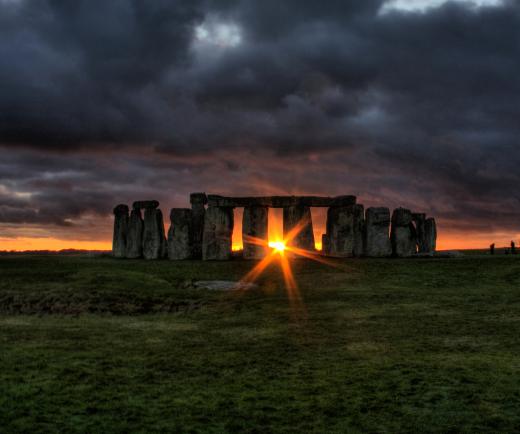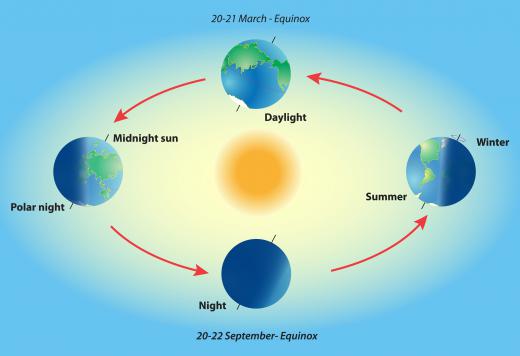What is the Spring Equinox?
The spring equinox is one of two equinoxes that occur every year. Equinoxes are astronomical events when the light from the sun is evenly distributed across the surface of the Earth. Night and day are roughly the same length in most locations during this time. The spring equinox occurs in mid-March in the northern hemisphere. Many cultures have special celebrations or rituals on this date, which often coincides with the first day of spring.
The Earth’s position relative to the sun does not allow sunlight to be evenly distributed across the daylight side of the planet during most of the year. The Earth is tilted on its axis, so most regions of the planet, other than the equator, are pointed either toward or away from the sun. The Earth’s position changes as it circles the sun, with the result that the northern hemisphere faces the sun during the months of March through September, creating mild to hot temperatures. The southern hemisphere faces away from the sun during these months, which is why one hemisphere experiences summer while the other experiences winter.

The spring equinox is the date when the sun is directly over the Earth’s equator as it shifts from the southern to the northern hemisphere. This is the official end of winter in most northern hemisphere nations. It is generally believed that day and night have equal length on the equinox, and indeed the word equinox derives from the Latin phrase for equal night. The actual date when day and night have equal length is called an equilux and usually occurs a few days before the equinox.

The spring equinox is also known as the vernal equinox. It is sometimes called the March equinox, a more accurate phrase for parts of the globe where spring does not start until September. In either hemisphere, spring is seen as the end of winter and the beginning of the most fertile harvesting period. The spring equinox is thus highly significant to cultures and businesses that depend on agriculture or the climate.
Many ancient cultures held fertility rituals on or around the spring equinox, some of which are still observed. The Christian holiday of Easter includes some vestiges of these earlier festivals, including eggs and rabbits, both symbols of fertility. Many people believe an egg can be balanced only on its end on the spring equinox, but this is a myth that may also have its origins in fertility rites. A more modern tradition is the Burning of the Socks, held every spring equinox in Annapolis, Maryland. The area is highly dependent on sea trade in the nearby Chesapeake Bay, and for these people spring signals the end of cold weather and the resumption of business and casual, sock-free summer clothing.
AS FEATURED ON:
AS FEATURED ON:












Discussion Comments
@Logicfest -- the same is true of the relationship between Christmas and the winter solstice. Easter was set up as both a holiday and a time to teach people about Christ and the same is true of Christmas.
It is significant that both holidays still contain some pagan elements, likely as a way to incorporate the celebrations they replaced into the new holiday as a way to appeal to more people. If people were already accustomed to certain practices that took place during the spring solstice, it makes more sense to adopt some of those practices in a new holiday if the overall goal was to pull in more people and brand an established pagan festival as a Christian one.
And why does Easter still contain a lot of remnants of old spring solstice celebrations? Because the early Church sought to assimilate pagans by taking over a traditional celebration, introducing significant Christian elements into it and creating a new holiday. That was part of the conversion process and it worked brilliantly.
Post your comments